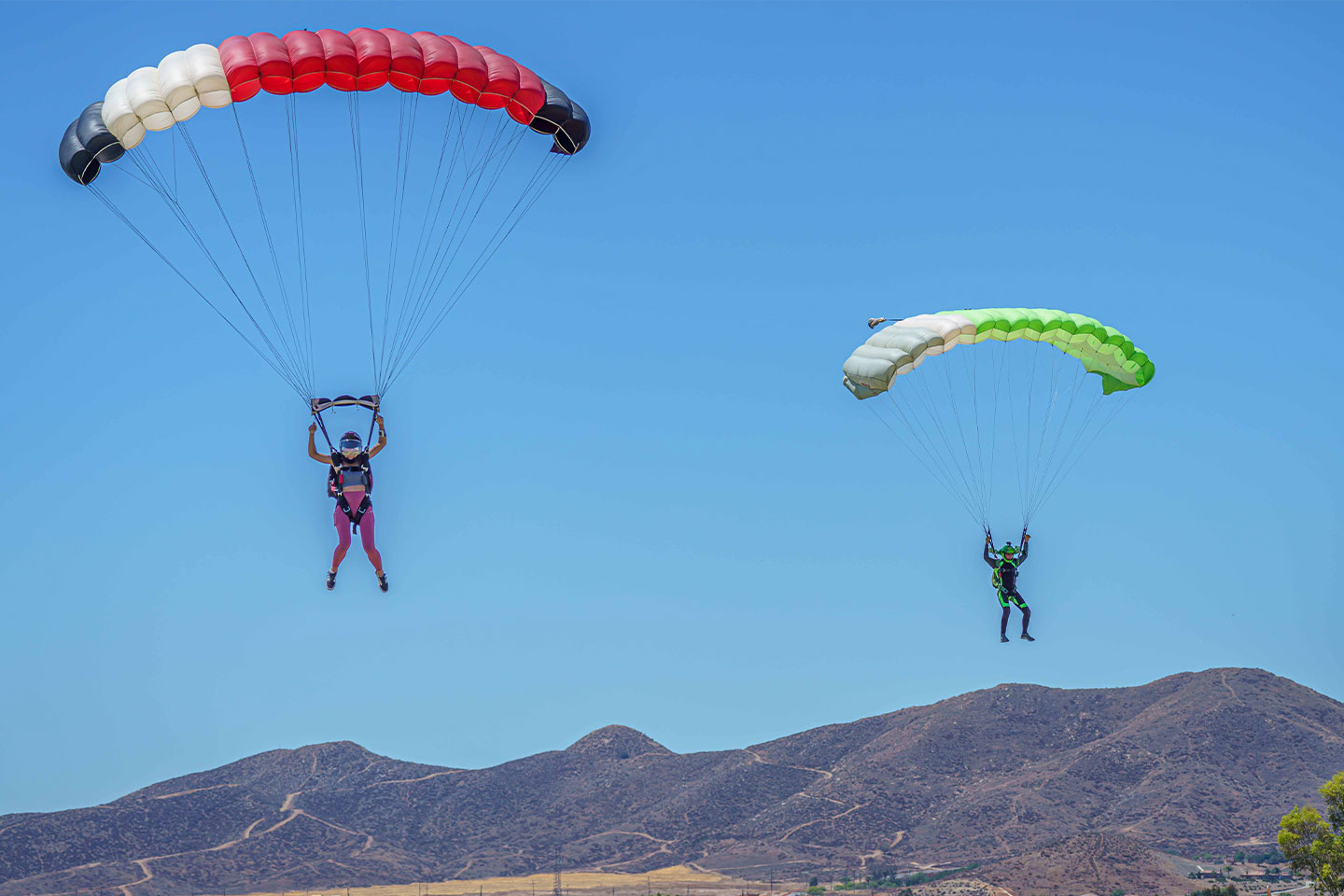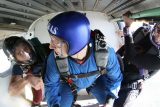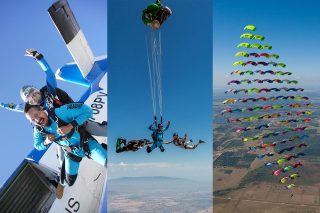OUR ENEMY IS COMPLACENCY
Dan Brodsky-Chenfeld
Posted by: Dan Brodsky-Chenfeld
9 years ago

Jumping out of a perfectly good airplane is not a normal thing to do. It takes a special kind of person to make that first jump and an even more special person to become a skydiver. We are people from all walks of life who share an intense and unusual passion for human flight. The passion is so strong that despite significant risk, investment, sacrifice and basic common sense, we are drawn to the skies where we face our fears and learn to fly. And there is nothing in the world that compares to flying.
The one thing that can diminish a love of skydiving is seeing or hearing about accidents. Anytime a skydiver dies or is seriously injured, it hurts us all. The good news is that the industry has figured out the most common causes of skydiving accidents, and we have the power to avoid the vast majority of them. Our enemy is complacency…
#Complacency
The marvelous advancements in training and equipment have lulled many of us into a false sense of security. With wind tunnels and AFF training, our freefall skills advance very quickly. We become comfortable and confident in the air with only a handful of jumps. It wouldn’t hurt for us to stay a bit more scared for a little longer. These advanced freefall skills don’t always equate to good aerial awareness. Good decision-making survival skills come only with practice and experience.
# Maintain Responsibility
Too often, we give up taking responsibility for ourselves and rely entirely on our equipment. For example, during a big-way formation skydive, one person deployed his main so low that it opened just as his automatic activation device (AAD) fired. He ended up with two canopies out and landed safely out of pure luck. Afterward, he said he went low because his audible altimeter didn’t work. Although he had plenty of separation, the other jumpers were deploying, the horizon was rising toward him and he could have safely deployed more than 1,500 feet earlier, he waited for his audible altimeter and ignored the obvious. An audible altimeter is a valuable safety tool, but we shouldn’t let a small, fallible device be our only source of altitude awareness.
# Time-Sensitive
It is only jumpers who can make the skies safe. Even if we have the best equipment, benefitted from great training and jump at a DZ with the strictest safety rules, we have to take full responsibility for making safety happen. The good news is it’s not difficult or complicated to skydive safely. We know what can go wrong in the air. The proper procedures for handling most of these emergencies are simple but they are also very time-sensitive. If we see a problem, we must automatically and immediately respond correctly
# Instant Response
After cutting away and landing safely under my reserve, several jumpers asked me what type of malfunction I had. I told them, “I don’t know.” They couldn’t believe my answer. But I hadn’t examined my equipment during the malfunction to see what was wrong. It just wasn’t right! That’s all I needed to know. I cut away less than two seconds after the main canopy was out.
Too frequently, skydivers land canopies they should have cut away or are indecisive and take too long to cut away. Sometimes, the result is fatal. Skydivers say, “I thought I could get out of it,” or, “I wasn’t sure if it was good or not.” If you have to ask yourself if your canopy is good or not, then it’s not good!
Remember back to when you were a student: freefall was fast and loud, your heart was pumping, and adrenaline ran through your veins. You’d throw out your pilot chute and gently slow down as your main parachute blossomed open. Hanging underneath your parachute, everything was quiet and serene, the opposite of freefall. As you looked up at your canopy, it was almost as if it were looking down at you and saying, “It’s all good, I got you.” It felt like you were getting some love from your canopy… your best friend. So, if you look up at your canopy and you’re not getting any love, cut it away!
# Train Yourself
You can train yourself to respond immediately and correctly to skydiving emergencies by:
Planning
Planning, visualizing and rehearsing your response for each emergency until the response becomes muscle memory. Don’t wait until something goes wrong and then figure out how you should respond. Your decision and execution of the proper procedure need to be automatic.
These emergencies include, but are not limited to:
+ Aircraft emergencies (You should be completely geared up when you board the plane and know what you are going to do if you have to exit at any given altitude.)
+ Being too close to others at break-off & deployment time
+ Having a hard pull
+ Main-canopy malfunctions
+ Nearby canopies
+ Canopy collisions
+ Turbulent or downwind landings (Always be ready to PLF).
Build the right habits. The only way the correct procedure becomes automatic and instinctive is if you do it correctly every time. Wave off and check the airspace around you every time before you deploy, even if you’re doing a solo. Collapse your canopy as soon as you land, and turn to see if there is anyone else on final, even if you did a hop-and-pop and know there is no one else in the air. Practice the correct habits and procedures when you don’t need them, and they will be there when you do.
Anticipate Disaster
Expect that anything that could go wrong will go wrong on every jump you make. You are most likely to respond correctly and immediately if you are anticipating a problem. Being surprised by a situation will usually slow your response. When you track off from a jump, expect people to be close to you. Expect a hard pull. Expect a malfunction. Expect canopies to be coming at you. Expect someone to cut you off in the pattern.
A hard pull is a good example. Several times, jumpers who have gone low have told me that they had a hard time finding or pulling their pilot chutes but got them out on the third try. Well, if a jumper got the pilot chute out on the third try, the pull wasn’t that hard! The difference is that by the third try, the jumpers expected it to be difficult. Expect it to be difficult each time, and get serious about the first pull!
Unsafe is Uncool
Being unsafe is uncool. The skies are big and a DZ manager can’t see everything. It takes every jumper on your DZ to make your drop zone a safe one. If you see people being complacent, call them on it. If they are not paying enough attention to safe pattern flying, tell them so. Most people have a high regard for safety and think they are flying correctly. Let them know if they’re not.
I have been jumping for 33 years, have more than 25,000 jumps and have never been seriously injured. I’d like to say this safety record is due to my diligence and smart decision-making. But I also know that I got lucky many times. At this point, I figure my good luck has run out. Now I make every effort to maintain the highest degree of safety and to be ready for anything at any time. Please consider doing the same. There is no room in our sport for complacency.

Categories:
You May Be Interested In:

What is a Skydiving AAD?
3 years ago by Skydive Perris

2020: The Year We’ll Never Forget (No matter how hard we try)
4 years ago by Skydive Perris

Skydive Perris’ Covid19 Re-Opening S.O.P.’s
4 years ago by Skydive Perris

Ask Dan BC ANYTHING! A webinar with Skydive Perris’ Manager
4 years ago by Skydive Perris


